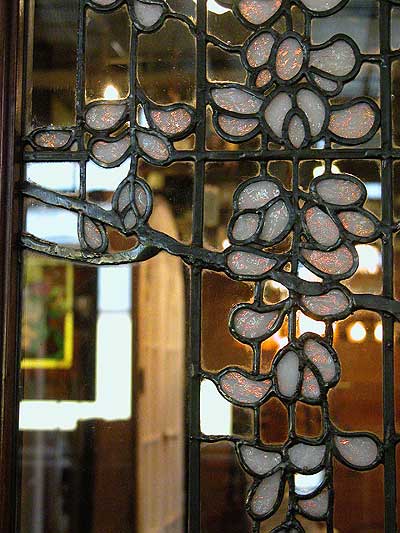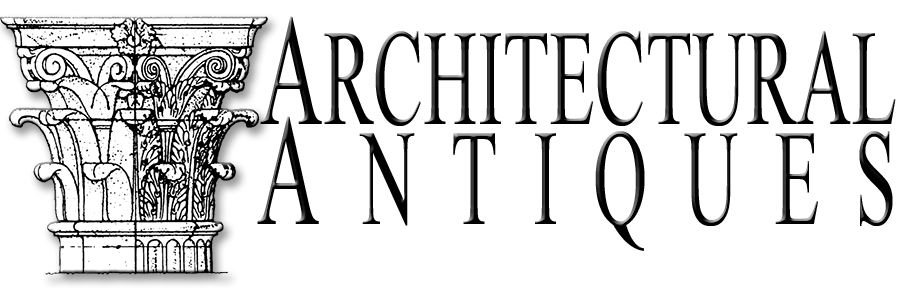
As one of Minnesota's premier interior design firms of the early 20th century, the work of John S. Bradstreet & Company is found in many prominent homes in South Minneapolis.
Bradstreet's interiors were sophisticated as he drew inspiration from numerous trips to Europe and Asia and all-encompassing as the interiors included furnishings, draperies, carpets, lighting, tile and stained glass, 'giving special attention to this department of their business'. Bradstreet stressed the handmade over mass produced and a high quality of craftsmanship, including wares from Tiffany, tiles from Rookwood and Grueby.
Illustration from; John S. Bradstreet & Company advertisement,1907. Courtesy of Minnesota Historical Society

Many homes within the Twin Cities preserve Bradstreet’s design legacies and provide a visual learning tool to identify his work as there are few records or drawings that name Bradstreet’s work, clientele or patrons. In order to identify the Wisteria sidelights from the Alfred E. Dickey residence as a work of Bradstreet, three examples; the Woodworth, Donaldson and Kenyon homes are compared here. The characteristics of stained glass and interior finishes from each home as well as the location, time of construction and a common architect support that the Wisteria sidelights are attributed to John S. Bradstreet & Company.
Illustration from; Bradstreet Thuber & Company, (pamphlet, 1884 Cover), Courtesy of Minneapolis Public Library, Special Collections

The characteristics of stained glass and interior finishes from each home as well as the location, time of construction and a common architect support that the Wisteria sidelights are attributed to John S. Bradstreet & Company.
Bradstreet's interior taste was not just limited to interiors glass & tile. Bradstreet also included his most well-known and admired technique of carved cypress paneling and furniture with the fin-di-sugi finish.
His work is still admired today in this Arts & Crafts town with a complete Bradstreet Room at the MIA.
Illustration from; Bradstreet Thuber & Company, (pamphlet, 1884), Courtesy of Minneapolis Public Library, Special Collections

As discovered in the attic of a East Calhoun Boulevard address, covered with decades of dust. Only with a professional cleaning did we discover what we thought lay beneath these Bradstreet Beauties.


















